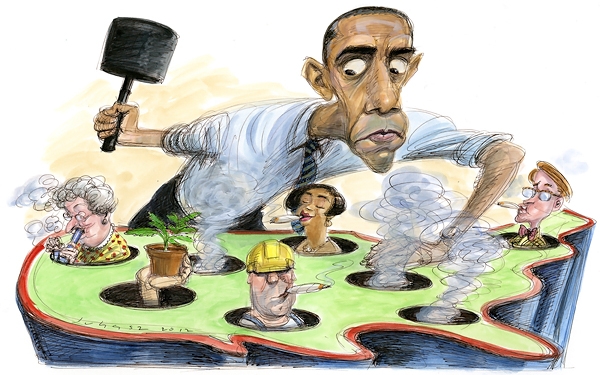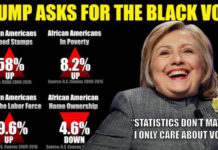Like thousands of other Bolivians, Marcela Lopez Vasquez’s parents migrated to the Chapare region, in the Andean tropics, desperate to make a living after waves of economic and environmental upheaval hit farming and mining communities in the 1970s and ’80s. The new migrants, who spread across the undulating green hills here, planted bananas. They planted yucca and orange trees. But it was in the coca leaf that thrives in this climate that they found the salvation of a steady cash crop – and themselves at the nexus of the American “war on drugs.”
The coca leaf has been sacred in Andean society for 4,000 years and is a mainstay of Bolivian culture. It is chewed by farmers and miners, enlisted in religious ceremonies, and used for medicinal purposes. “The only resource for maintaining our families is the coca leaf,” says Ms. Lopez Vasquez. “With coca we maintain our families: We dress ourselves, take care of our health, and educate our kids.”
Coca is also used to make cocaine. To American society, from White House officials to worried parents, the nation’s drug problems start in places like the back fields of the Chapare, where neat rows of coca’s spindly bushes, bursting with bright green leaves, stand head high. Bolivia is the world’s third largest grower of coca, behind Colombia and Peru.
For decades the coca growers here, Lopez Vasquez among them, resisted US-backed forced eradication in a long simmering protest that defined US-Bolivian relations and often turned violent. Growers in the Chapare scored a victory in 2004 when they were granted the right to grow a small plot of coca per family.
But a turning point came with the 2006 election of Bolivian President Evo Morales, a former coca grower from the Chapare and still the head of its unions, who promised an end to the old US-Bolivian paradigm. Within three years of his presidency, Mr. Morales kicked out the United States Drug Enforcement Administration (DEA), as well as the US ambassador, accusing both of fomenting opposition.
Last year Bolivia became the first country ever to withdraw from the United Nations 1961 Single Convention on Narcotic Drugs for the charter’s failure to recognize the traditional use of the coca leaf.
Now the Chapare is once again a nexus – but this time for a new government experiment markedly different from former US drug policy. Today, farmers unions partner with government agencies to control coca production, reducing the amount of the leaf cultivated across Bolivia, as well as the quantities destined for illegal uses. This cooperation is new, and the very acceptance of coca crops in the Chapare defies US wishes.
The US, in fact, has voiced deep skepticism about Bolivia’s commitment to the international fight against narcotics, condemning La Paz in a 2012 report for “failing demonstrably” in its antinarcotic obligations.
For the residents of the Chapare, however, the “nationalization” of Bolivia’s drug fight means the preservation of a lifestyle and a basic income without the threat of constant conflict.
“I am a coca producer, and they made us take out our crops so cocaine would disappear and narcotraffic would disappear,” says Felipe Martinez, who heads a state entity in charge of monitoring and eradicating coca that exceeds legal limits in the Chapare. “But that didn’t bring results. It brought blood, sorrow, orphans. We lost the right to be people.”
Bolivia’s more go-it-alone approach symbolizes a fundamental shift in the drug war in Latin America – one that is creating a tense new relationship between the US and its southern neighbors and could help determine how many drugs ultimately end up on urban streets.
Countries across the region are adopting a more autonomous, sometimes nationalistic, response to narcotics control that increasingly questions Washington’s priorities and prescriptions. From Bolivia, where drugs are produced, to Mexico and Guatemala, where they transit through, to Brazil, where they are increasingly consumed, officials are forging new policies or floating ideas to deal with a problem they believe 40 years of US-dictated solutions hasn’t curbed.
The relationship between Latin America and the US has always been at its most fraught over the war on drugs, ever since Richard Nixon launched the initiative in the 1970s. Nowhere has Washington’s scolding finger been more in the face of its Latin American counterparts. Nowhere has Latin America felt it has fewer options than to just acquiesce, dependent as it is on US aid and military might to overcome the cartels that control narcotics trafficking.
But in the past five years, frustration has mounted. Gruesome drug crimes have brought record levels of violence to swaths of Mexico and Central America, despite the billions that the US has poured into the antinarcotics fight.
Leaders in the region are pleading for new alternatives – some are even discussing legalized drug markets – no matter how much those ideas might alienate the US.
The restiveness reflects a growing political assertiveness in the region. While Latin America has always been weary of the heavy hand of the US, Bolivia and Venezuela have taken their indignation to a new level, refusing to cooperate with the DEA and other US officials. Many countries also seem less inclined to genuflect toward Washington on other issues, from trade to foreign policy.
Yet it is the drug issue that will most define US relations with the hemisphere – and have the most impact around the world. Latin America remains the world’s No. 1 supplier of cocaine, and how various countries deal with their coca tracts will not only affect the flow of narcotics, but might lead to new strategies in the drug fight.
For now, the range of ideas and possible routes of action vary widely. Leaders in the most vociferous countries even concede that their ideas might not work. But what seems certain is that the days of policy dictated so heavily from Washington are vanishing.
“There is a desperate call from Latin America for peace, which includes a new model for drug policies,” says Milton Romani, Uruguay’s ambassador to the Organization of American States (OAS).










